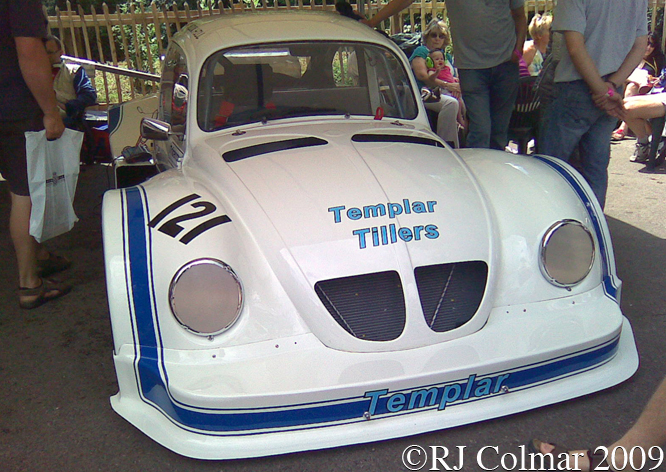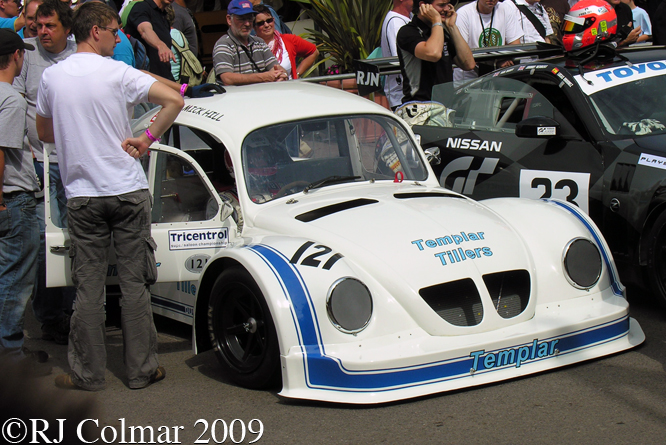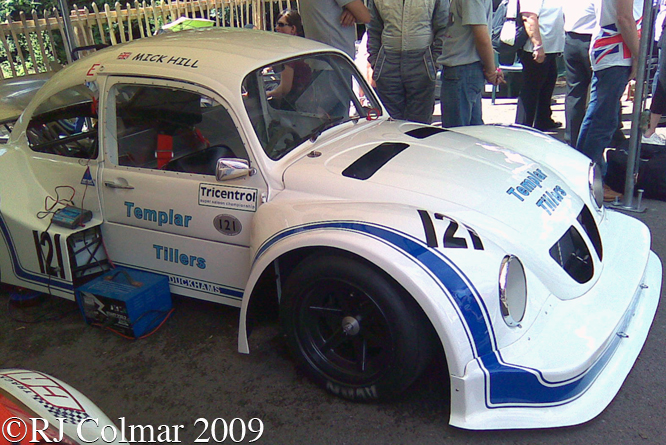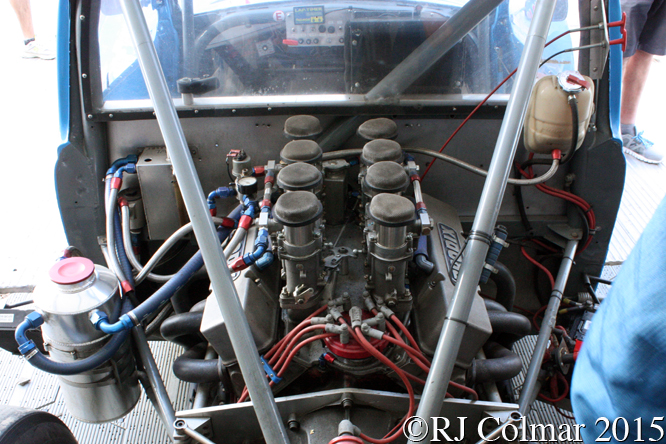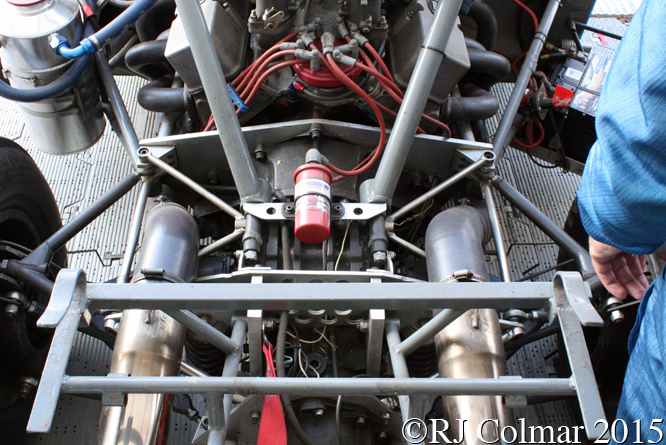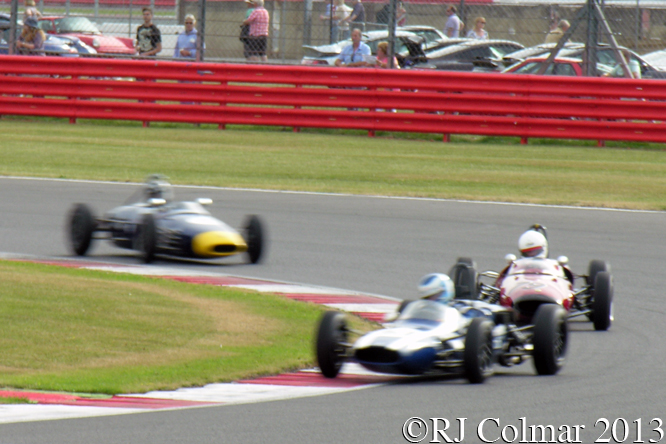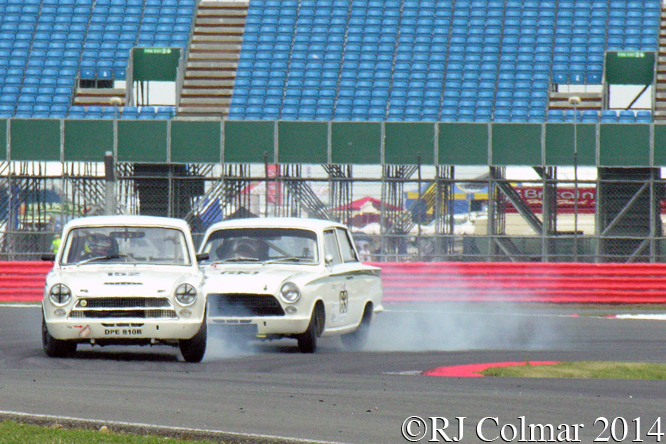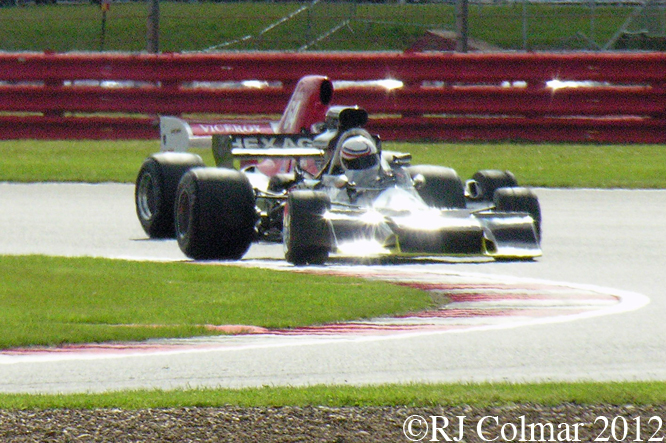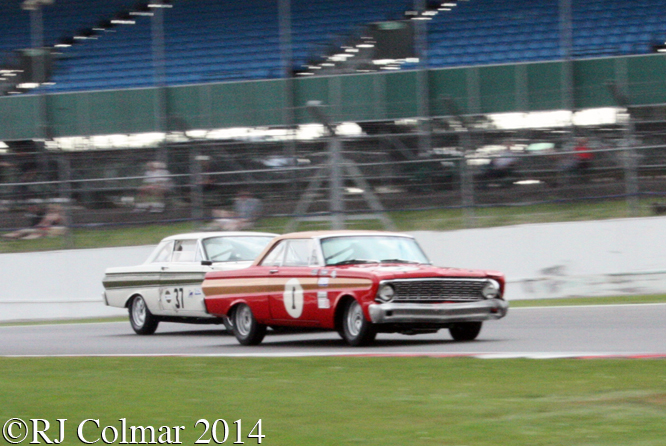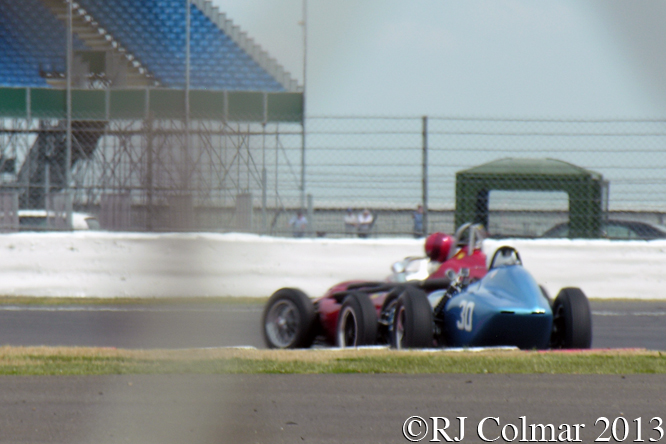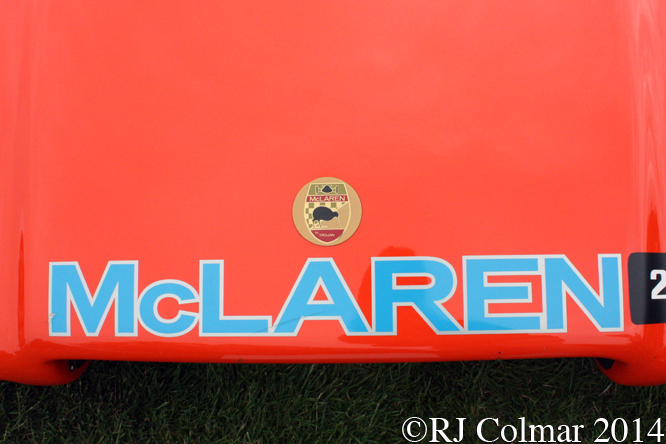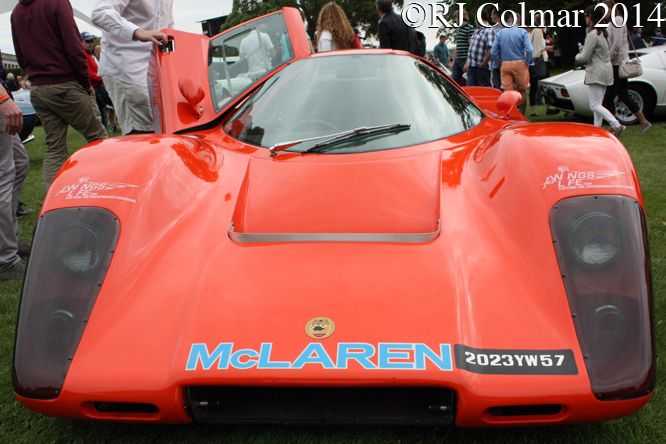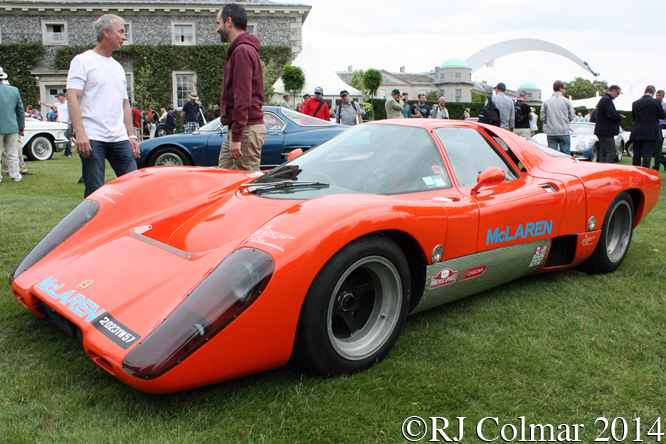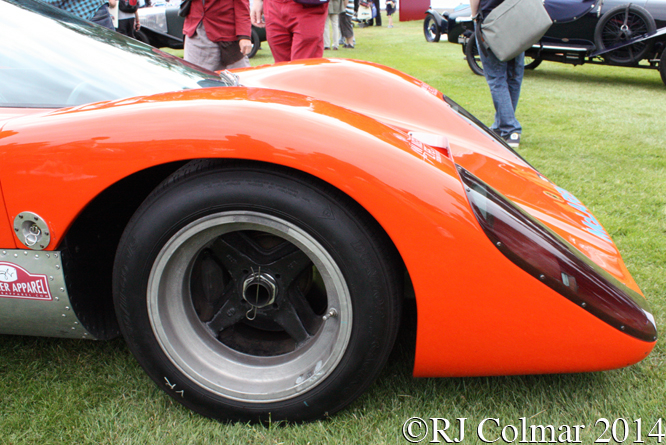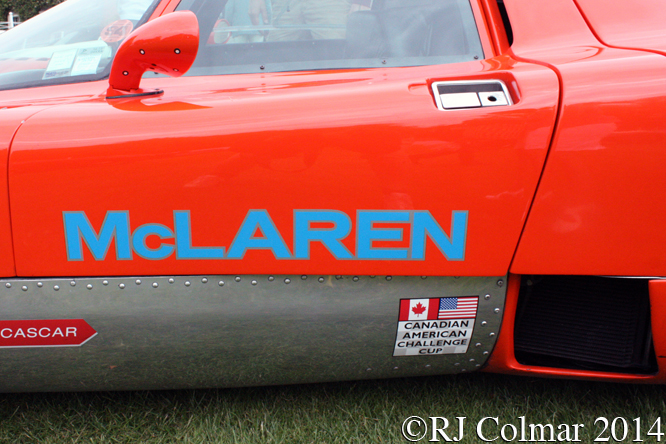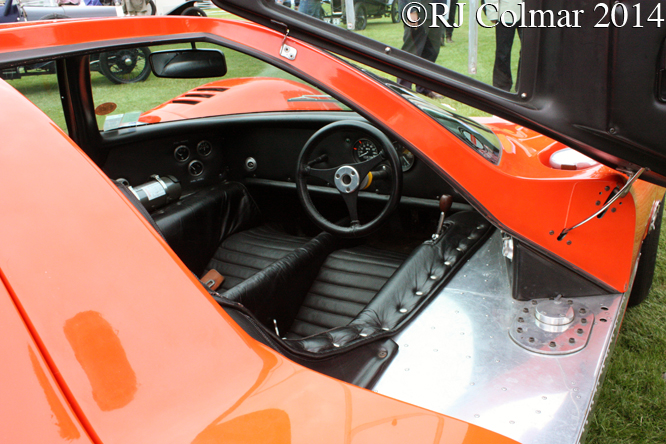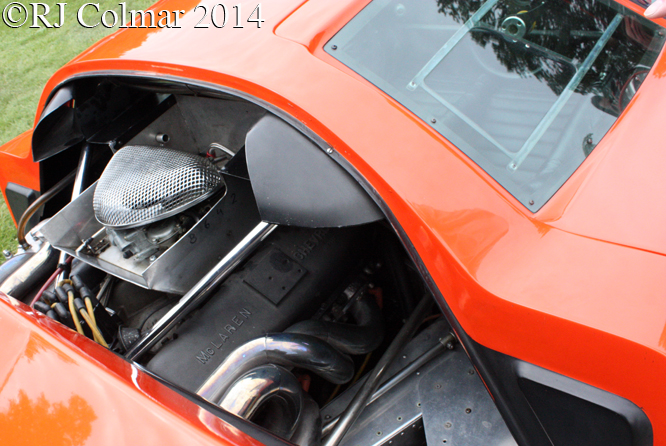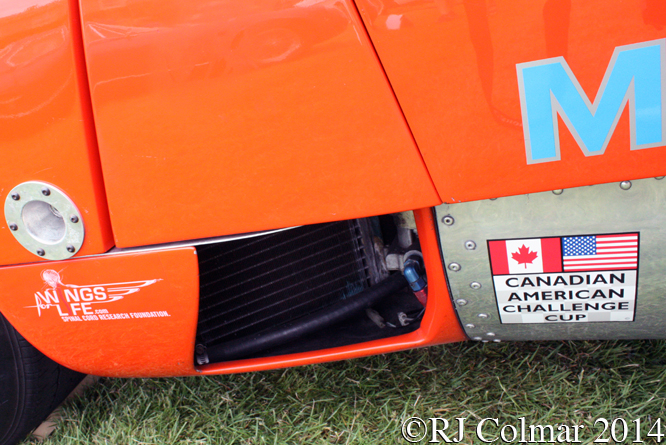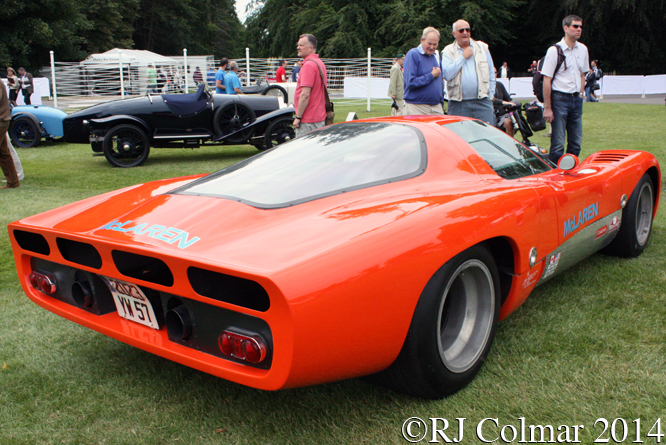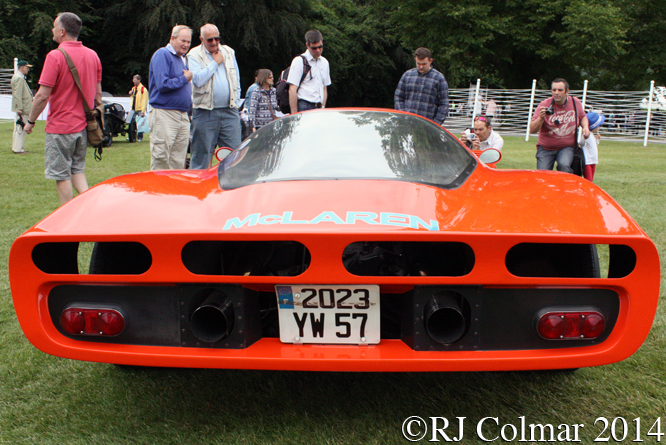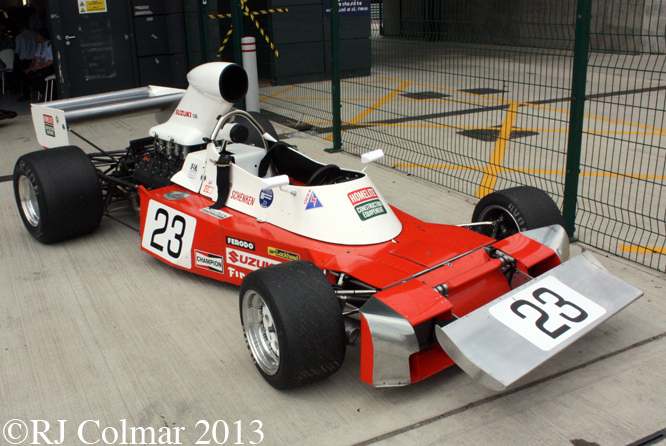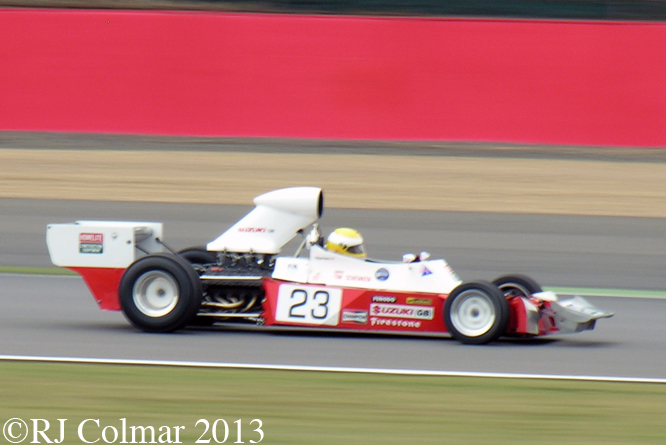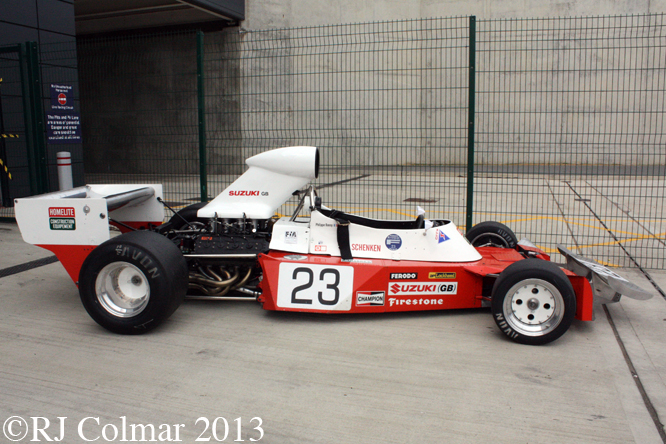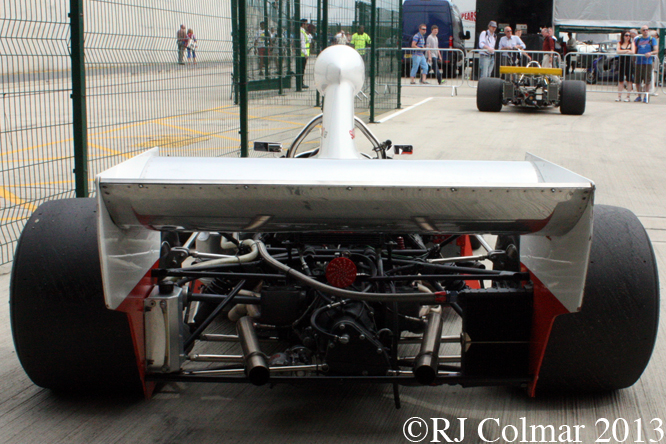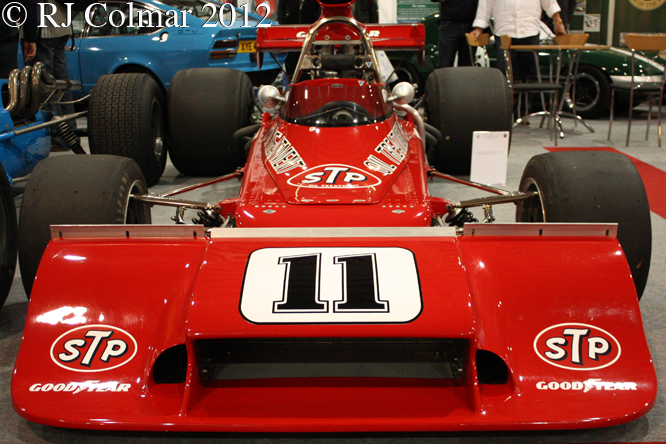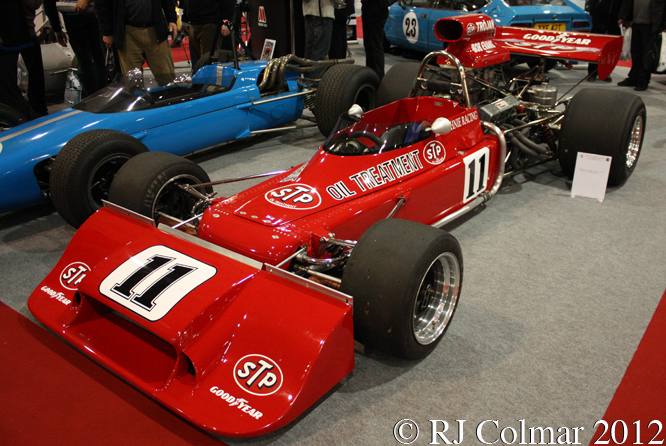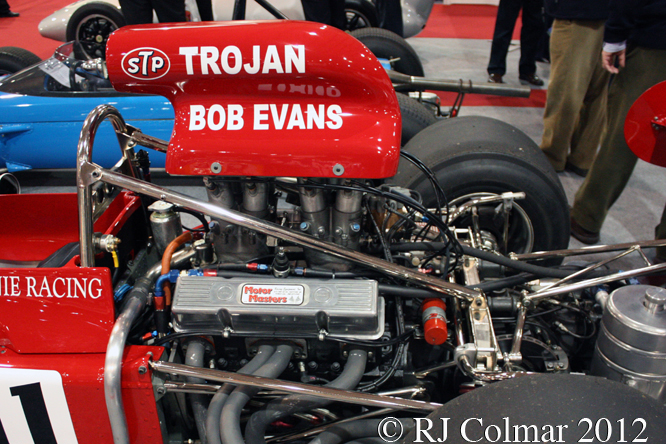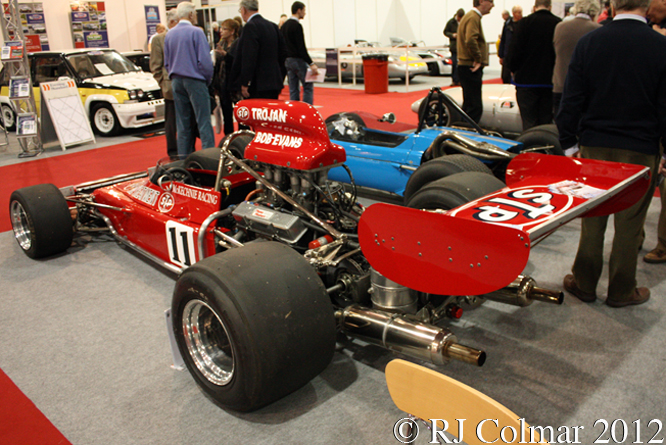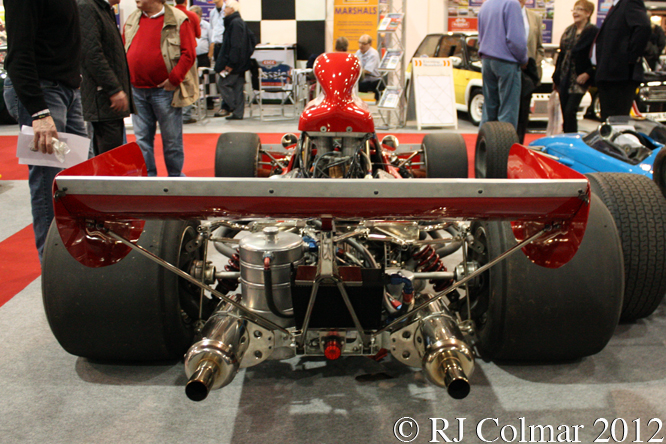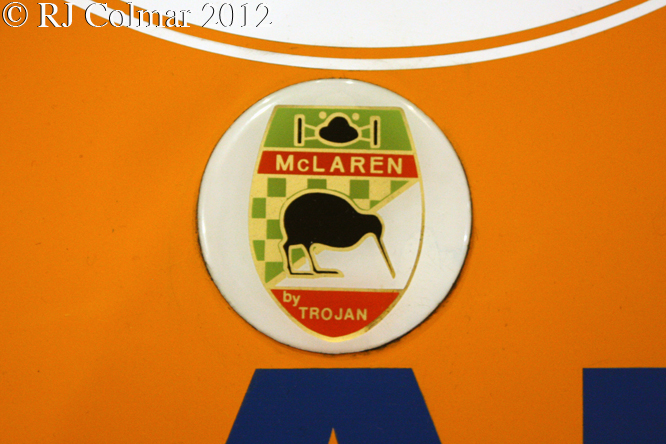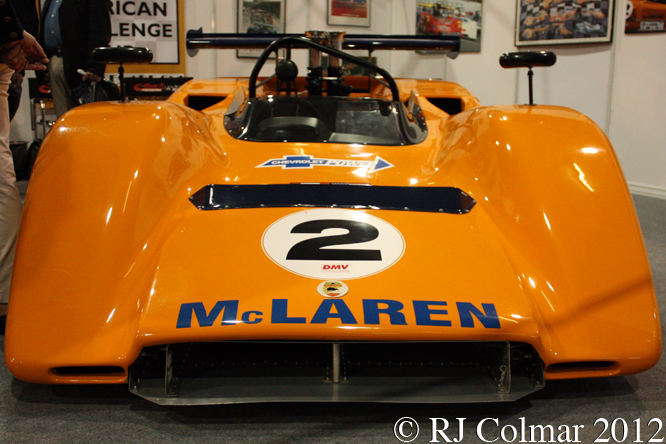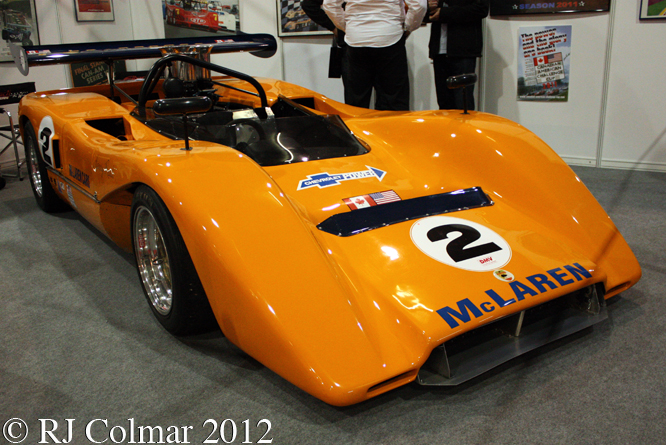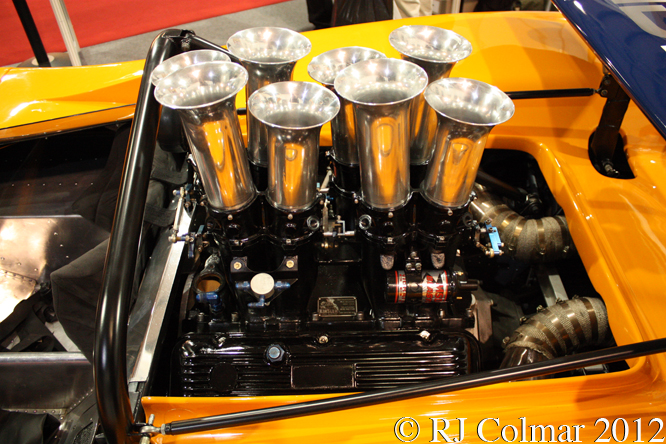The inaugural Can Am Challenge run in 1966 had been a huge successes with four different drivers winning the six races, two of them world champions, and Lola winning 5 of the races with Chaparral winning the other. For 1967 the complexion of the series would change completely as what became known as the Bruce and Denny steamroller gathered momentum with the Traffic Yellow McLaren M6’s.
Denny Hulme won the opening 3 races of the series leading team owner Bruce McLaren home in the second and third. Bruce then won the forth and fifth rounds by which time Bruce and Denny had secured first and second places in the championship. At the last race of the 1967 Can Am season the Traffic Yellow steam roller came to a temporary if grinding halt when Bruce and Denny both retired to leave 1966 Can Am champ John Surtees to take a consolation victory in his one year old Lola T70 MkII.
For 1968 Bruce McLaren stepped his team up another gear with the McLaren M8, while offering a production version of the previous years winner known as the M6B which was manufactured by Trojan, the same company that had once built bubble cars under licence from Heinkel and taken over the Elva racing car business, prior to building production versions of the Mclaren M1.
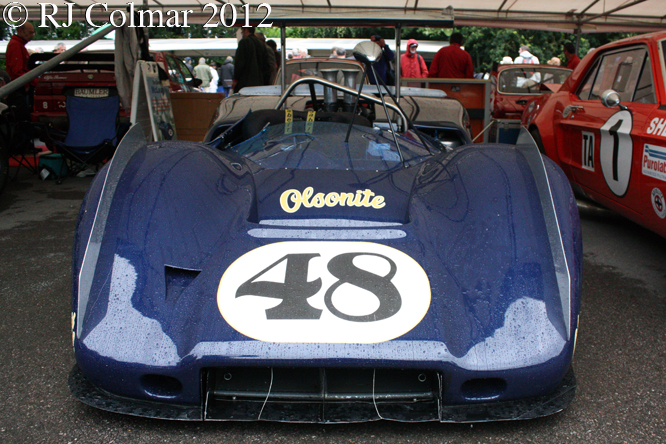
Dan Gurney, who won the second race in the inaugural 1966 Can Am Challenge with his Ford Powered Lola T70 MkII, decided to replace the aging car with a McLaren M6B for himself and a Lola T160 for his team mate Swede Savage, both cars remained Ford small block (under) powered running with Westlake heads for the 1968 season.
To try and beat both the works Chevrolet powered McLaren M8’s and the customer M6B’s run by Penske for Mark Donohue with Chevrolet Power and the Ford 427 cui big block powered Shelby McLaren M6B of Peter Revson and the Motschenbacher Racing Enterprises example driven by Lothar Motschenbacher Dan’s All American Racers (AAR) team embarked on a continuous programme of development centered mostly on the M6B #50-10 featured today.
As well as lightening the M6B with exotic materials as used in the Eagle Formula One programme they continually upgraded the body work.
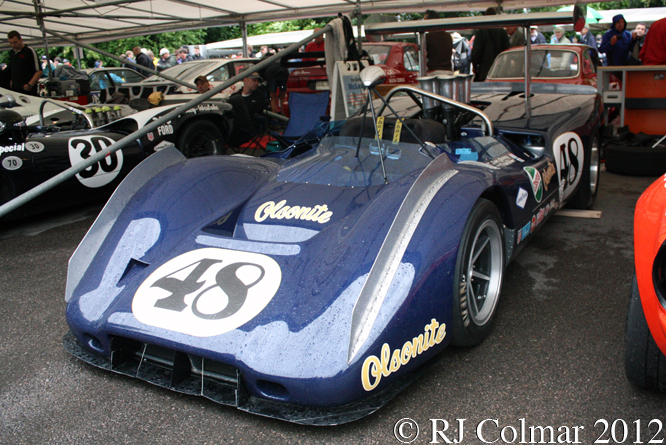
AAR missed the opening round of the 1968 Can Am challenge where 1967 World Champion Denny Hulme led his countryman and team mate Bruce McLaren home in yet another Traffic Light Yellow walk over. At the following race run at Bridgehampton Denny and Bruce both retired with broken motors having started 1st and 2nd on the grid leaving Mark Donohue to win in his Chevrolet powered Penske M6B from Jim Hall in his Chaparral 2G.
Motschenbacher came home third in his Ford powered M6B ahead of Swede Savage in the small block Ford powered AAR Lola T160 which had started just 17th. Dan qualified 6th and finished 6th on his debut in the M6B. The Bridgehampton result would remain the teams best finish of the season as AAR experienced a variety of ills including chronic unreliability from the underpowered Gurney Westlake developed motors for the remainder of the 1968 season, Gurney and Savage even swapped cars for the last two races of the 1968 season with no appreciable difference in the results.
Denny and Bruce McLaren again topped the points standings this time Denny was Champion with three wins to the single win for Bruce. Mark Donohue finished the season third with one win. Canadian John Cannon won at Laguna Seca to score the only Can Am win in the now three year old McLaren M1B model at Laguna Seca.
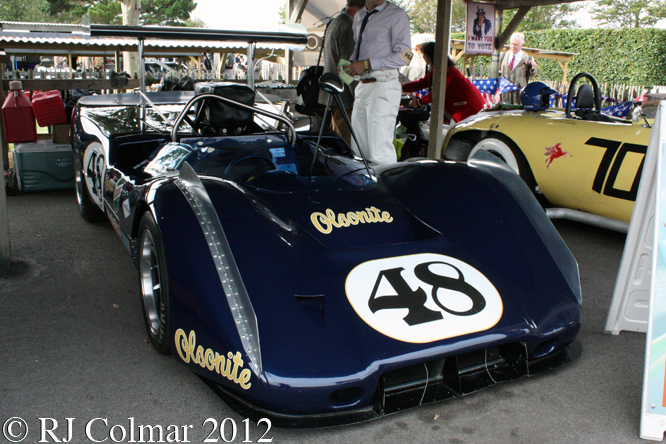
For 1969 Dan persevered with just the #M6B-50-10 which was by now so heavily modified it became known as the McLeagle, the reliability of his motors did not improve and midway through the season he missed a couple of races in order to install a big block Traco Chevrolet. Ironically when Dan returned to the fold with his M6B at Michigan his Bow Tie power developed an oil leak in practice and he ended up taking Jack Brabham’s intended drive in a third works McLaren M8B alongside Denny and Bruce.
Having failed to set a time in practice Dan started from the back of the field and finished third behind Bruce and Denny in a 1-2-3 finish for the McLaren team. At Laguna Seca Dan was back in his own car in which he qualified 4th but retired with a blown piston. Dan’s best ever result driving #50-10 after nearly two seasons of trying came at Riverside where he qualified fifth and came home 4th.
Dan skipped the last round of the 1969 Challenge at Texas motor speedway and ended the season equal 11th in the standings with Mario Andretti who had driven a Holman Moody entered M6B powered by a big block 427 Ford. The Challenge title went to Bruce McLaren who won six races of the expanded 11 race series with team mate Denny Hulme winning the remaining five races in what had been another Traffic Yellow wash for McLaren.
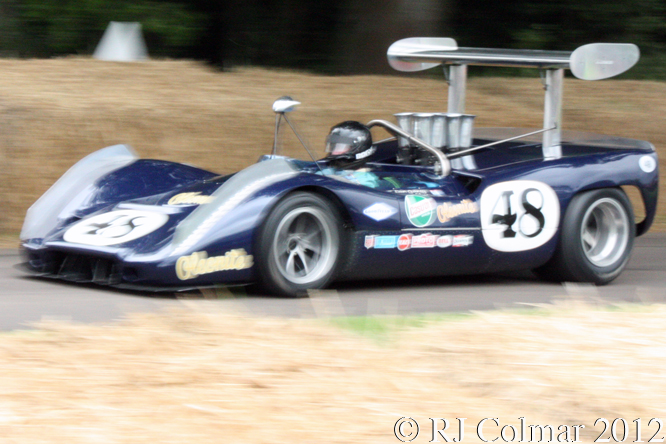
Dan sold the #50-10 to Bob Brown for the 1970 Can Am Challenge, Bob also scored a couple of 4th place finishes which with 3 other minor points finishes in the further modified car was enough to secure 9th in the Challenge table.
With the death of Bruce McLaren in a testing accident at Goodwood, before the 1970 Can Am challenge got under way, Dan was drafted into replace the McLaren team founder and ended up winning the first two races of the season while Denny Hulme was driving with severely burned hands received while practicing for the Indy 500. Denny went on to win six of the remaining 1970 Can Am races to secure his second Can Am title and Mclaren’s third consecutive title.
By 1971 Dan had retired from race car driving, while Bob Brown soldiered on in #50-10 scoring a season high 6th place finish at Mosport. Bob sold the car onto RS Enterprises for the 1972 season during which Frank Riemann and Dave Causey were entered into at least three events Causey finishing a best 16th in the Can Am round held at Donnybrooke.
#50-10 is known to have been driven by Jigger Sirois in the Can Am race at Road America in 1973 and by Bob Svast at Road Atlanta in a US Champions event in 1974, from which the car was retired on both occasions. The car has been restored to it’s high wing 1969 spec as seen in these photo’s, taken at Goodwood last year, with owner Andy Boone at the wheel.
My thanks to TNF’ers raceanouncer2003 Vince H, for enlightening me about the development of today’s M6B and Gurney’s Lola T160 and to kayemod Rob for showing me a tin of the Traffic Yellow 11040 LR Rylands Polyester Colour Paste used to pigment the works McLaren fiber glass body work.
Thanks for joining me on this “Dan’s McLeagle” edition of “Gettin’ a li’l psycho on tyres” I hope you will join me again tomorrow for a look at a McLaren M8 C/D. Don’t forget to come back now !
